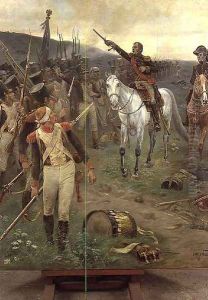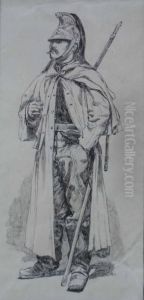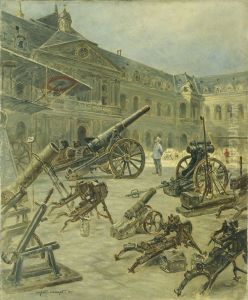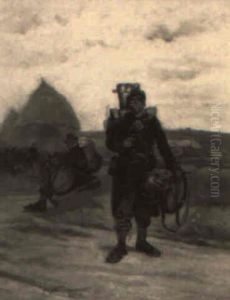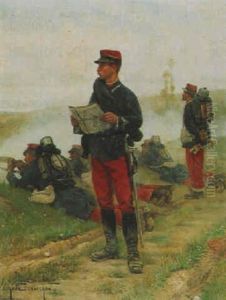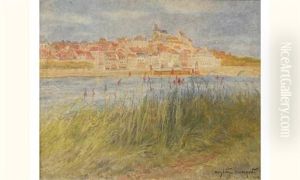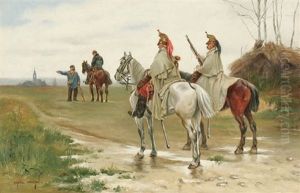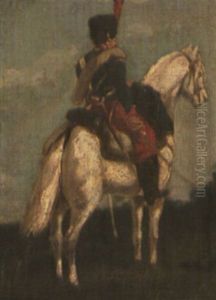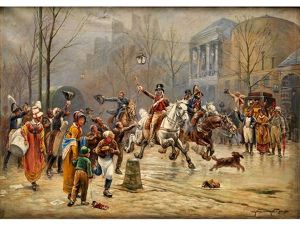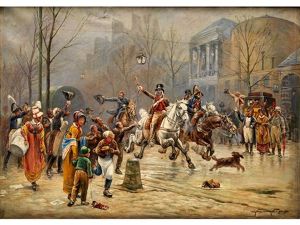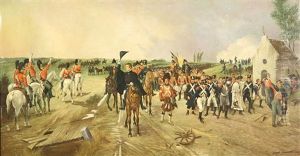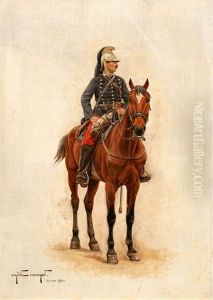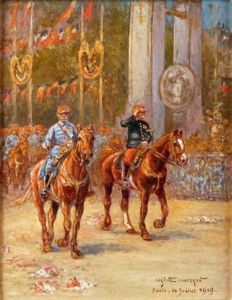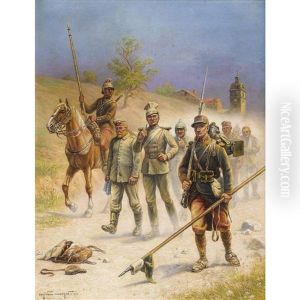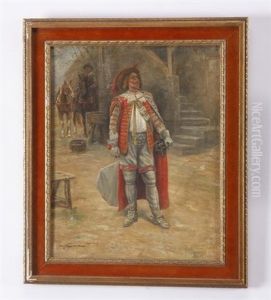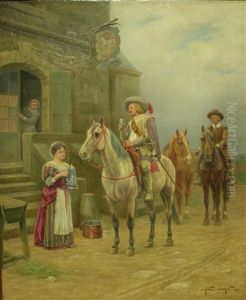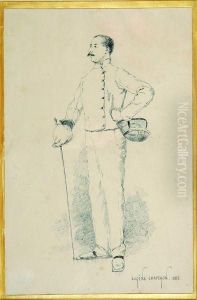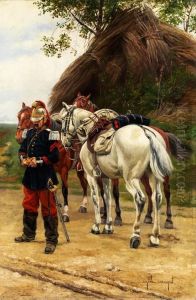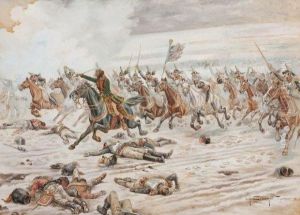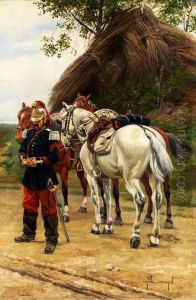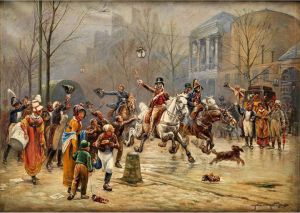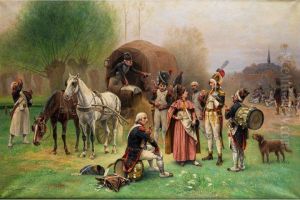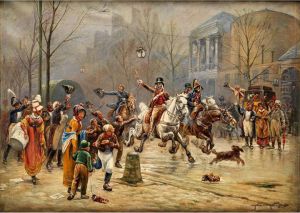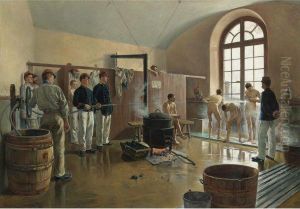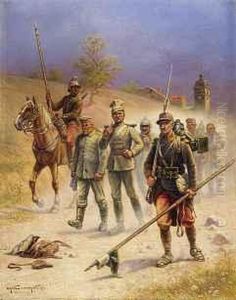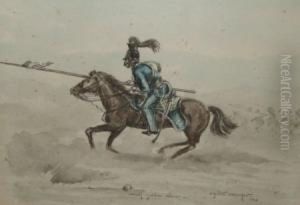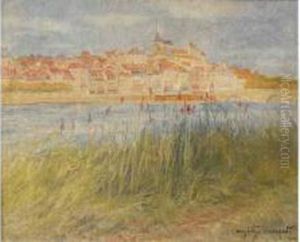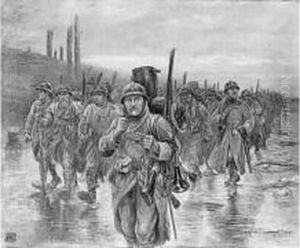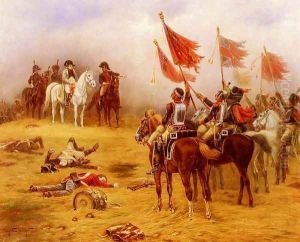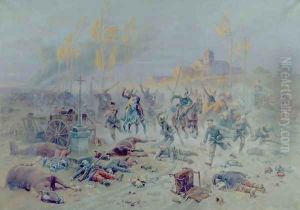Eugene Chaperon Paintings
Eugène Chaperon was a distinguished French painter and illustrator, born in 1857 in Périgueux, Dordogne, and passed away in 1938. He is best known for his military and historical scenes, which capture the essence of French patriotism and the valor of its soldiers. Chaperon studied under the tutelage of Alexandre Cabanel and Pierre Puvis de Chavannes, two of the most prominent French artists of their time. This education provided him with a solid foundation in the traditional techniques of painting, but it was his personal interest in France's military history that shaped the subject matter of his most memorable works.
Chaperon's contributions to art extend beyond his canvases; he was also an accomplished illustrator, contributing to various publications of his time. He had a particular talent for bringing historical events to life, not only through his paintings but also through his illustrations, which were featured in books and periodicals. These works were celebrated for their accuracy in depicting historical uniforms and settings, making them valuable resources for historians and enthusiasts of military history.
Throughout his career, Chaperon participated in numerous exhibitions, including the prestigious Salon de Paris, where he gained recognition and accolades for his work. His paintings are characterized by their meticulous detail, vibrant colors, and dynamic composition, qualities that make them stand out in the realm of historical and military art.
In addition to his paintings and illustrations, Chaperon's legacy includes murals for public buildings, further cementing his status as a patriotic artist who contributed significantly to France's cultural heritage. Despite the specificity of his subject matter, his work transcends its niche, offering insights into the broader human experiences of courage, sacrifice, and national identity.
Eugène Chaperon remains a respected figure in the history of French art, particularly among those with an interest in military and historical themes. His ability to capture the spirit of France's past, combined with his technical skill, ensures that his work continues to be appreciated by art lovers and historians alike.
